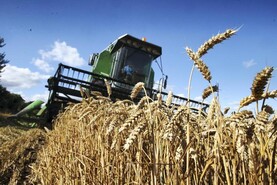Direct payments should be focused on regions where farmers’ incomes and quality of life lag behind those of farmers in other regions, an EU report has recommended.
The report evaluated the impact of the CAP on territorial development of rural areas in terms of socioeconomic aspects.
“Pillar I basic payments should be increasingly focused on regions where farmers’ incomes, in comparison with the whole economy, and quality of life lag behind those of farmers in other regions, and within regions.
“Likewise, basic payments should be more focused on those farm scales and types which suffer from the worst social and economic conditions,” it said.
Strategic plans
It also found that knowledge transfer and advisory services should be assigned to the “most vulnerable areas”.
On CAP strategic plans, it recommended that plans “should be scrutinised by stakeholders representing disadvantaged rural groups and their opinions and concerns fully integrated into the ex-ante evaluation process in a transparent way”.
Positive impact on rural economies
Direct payments have been found to positively affect regional employment and re-investment, it found.
However, it also found that direct payments were criticised by respondents to a part of the study “as instruments that provide significant funding to larger farms, and for their tendency to be more concentrated in already developed agricultural areas”.
It found that this limited overall effectiveness of direct payments in addressing balanced territorial development.
Concern
“Because direct payments are allocated in relation to farm size, larger farms are eligible for proportionally larger amounts of funding than small farms.
“As such, there is some concern that the differential benefits experienced by small and large farms may ultimately widen the economic divide between them, and further limit the ability of small farms to compete,” it said.
Schemes from Pillar 2 of the CAP, such as GLAS, TAMS and the Sheep Welfare Scheme, were also associated with positive effects on balanced territorial development, but there was a high administrative burden on farmers.
“Furthermore, Pillar 2 is less often associated with favouring larger farms. Nonetheless, this study has observed that high administrative burden in Pillar 2 reduces access to funding for small farmers, organisations, and enterprises,” it said.
Farm viability
It also said that basic payments and green payments play an important role in supporting farm viability by providing some measure of income stability.
“Stable farm incomes boost local expenditure and allow farms to employ and retain labour.”
In the current CAP, direct payments are estimated to have helped rural economies create and safeguard 5.2m employees.






 This is a subscriber-only article
This is a subscriber-only article











SHARING OPTIONS: